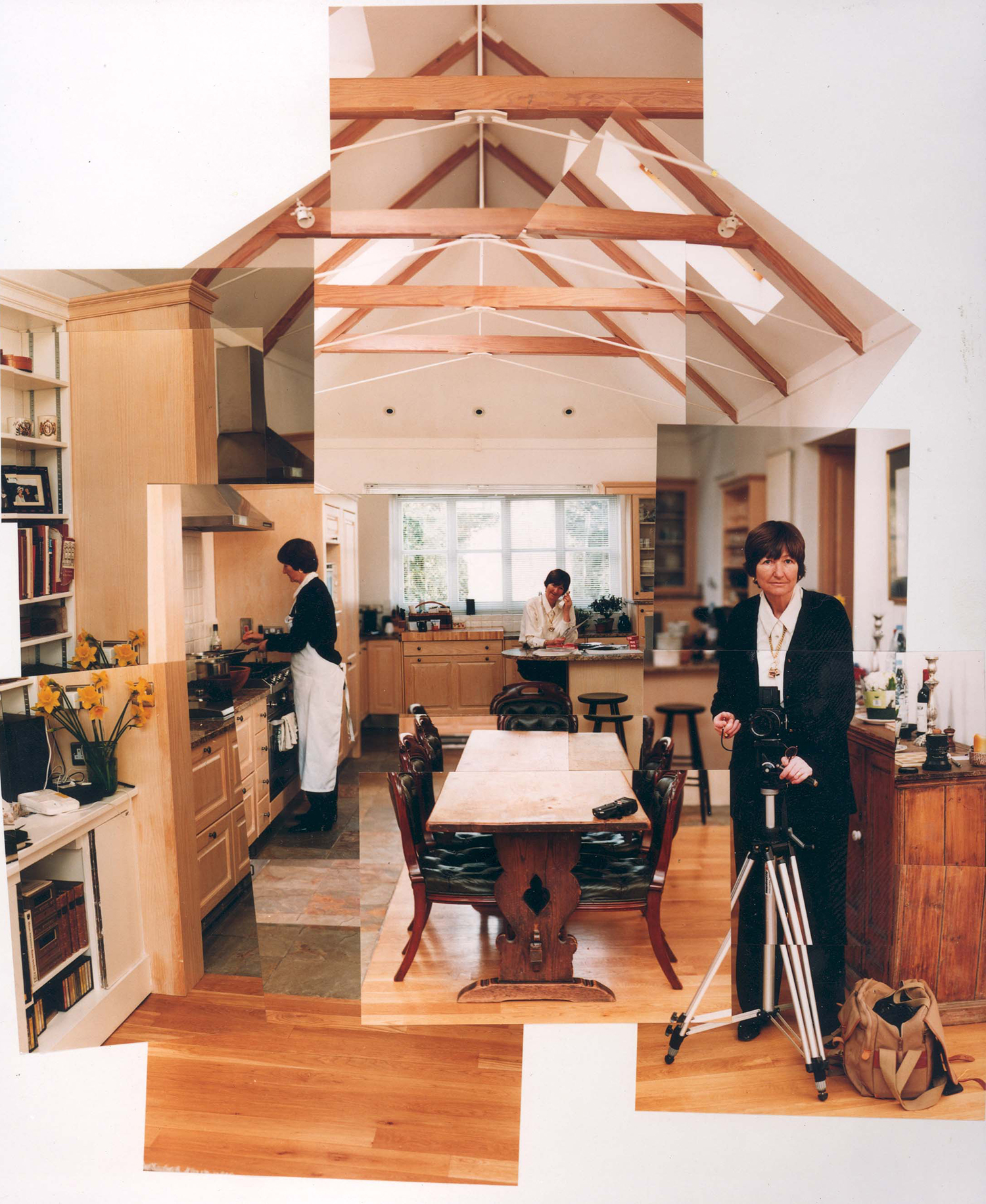Drawing on the work of his wife, the photographer Elizabeth Handy, Charles Handy, former Chair of the RSA, reflects on what a portrait of a good life may look like and the need to balance our passions and need to earn with people.
If you look at the photograph below you will see three people. Intriguingly, however, they are all the same person, in this case the portrait photographer Elizabeth Handy. This is her self-portrait. Elizabeth believes that a single image can never capture the full richness or variety of someone’s life. She therefore asks people to act out the three most important roles of their life, each of which will reveal a different aspect of their personality. She then joins the three portraits together into one composite portrait.
What she does not tell them is that the camera has another trick to play. As people start to act out their roles they instinctively place themselves in their favourite role nearest to the photographer. But the photographer does not move her position. The result is that the nearer images are much larger than the further ones, as in the above example. The camera has prioritized the roles. Sometimes images speak louder than words, and more truthfully perhaps.
In Elizabeth’s own portrait her passion, for photography, is clearly dominant, followed by her role as mother of the household. At the back, very diminished, she is seen in her role as the manager of our small enterprise. Passion, People and Profit make up her life, in that order. The portrait is a moment in time. There were times when, to her evident displeasure, her profit or money-making role had to take pride of place, leaving her personal passion, and even her friends, in abeyance for a while. In an insecure world it is tempting to leave the profit motive there for life’s duration, looming large in front with people and a personal passion only distant attendants. That would be to elevate the necessary means of life to be the main goal of life, which would not only be a waste of a life, but a logical and, some would argue, even a moral error. Put simply, to make money the point is to miss the point.
That can be as true for a business as it is for a person. Business also has those three priorities of Passion, People and Profit. It is easy to claim that all three are important, and should be pursued simultaneously, but if a business were to be exposed to the camera test, which would come out biggest? In the more innocent days of 50 years ago, Jim Slater, then one of the new breed of private equity capitalists addressed the students at the recently formed London Business School. “Do you want to know the secret of my success?” he said. “I’ll tell you. Everyone else in this country makes things or does things for money. I am the only person who is interested in just making money, full stop. That makes all the difference.” He was right. It does. Unfortunately.
In the struggle to succeed or just to survive, both as businesses and as individuals, it is easy to hide from ourselves, to forget who we once wanted to be. As T. S. Eliot wrote “Where is the life we have lost in living?” It is then that some photographic self-awareness can often help, with a final product to hang on the wall as a reminder. For myself, today in my mid-80s, it is people, my family and friends, who will come out front in the camera test. It was not always so. I regret now that earlier in my life people were relegated to the back of the picture while I pursued what I felt to be important purposes in my work. When passion and profit combine it is easy to become self-absorbed. Age brings a different perspective. My CV with its record of jobs and contributions is now my history, things that shaped me but no longer define me. I have no wish to be introduced as: ‘He used to be…’
Life moves on, the photograph changes, but the same three elements remain. We will always need money, something to do and people who matter to us. Were the photograph to contain only one image of us, it would be sad. The promise of longer lives for most of us gives us yet another chance to rebalance our lives, to change the position of the images.
In other composite portraits some subjects used it as an opportunity to imagine how their life could be, dressing or equipping themselves as they might appear in their imagined future roles. The printed portrait would then hang as a continual reminder of their idea of what their life might be. Even without it we can picture in our mind what our own portrait would look like or what it could be. Life is too precious to let it happen by chance.
Charles Handy has been married to Elizabeth Handy for over 50 years. Charles is an author and philosopher specialising in organisational behaviour and management and Elizabeth Handy is a photographer. Charles' latest book 'The Second Curve: Thoughts on Reinventing Society' is out now.
Related articles
-
Artificial intelligence: the creative edge
Alex Soulsby
How should schools respond to AI? Alex Soulsby calls for a greater focus on the arts to help students develop their creativity, critical thinking, adaptability and emotional intelligence.
-
Last word: brand
Sairah Ashman
Sairah Ashman discusses what lies beneath the surface in a world awash with logo.
-





Join the discussion
Comments
Please login to post a comment or reply
Don't have an account? Click here to register.
I find this really thought provoking. My first thoughts are to show it to my fifteen year-old son and encourage him to create a similar self portrait.
I'm also going to share it with colleagues here at the Central Institute of Technology here in Perth, Western Australia. I think it will be especially interesting to lecturers who work with students of English as a Second or Additional Language and other mirgrants ..."In the struggle to succeed or just to survive, both as businesses and as individuals, it is easy to hide from ourselves, to forget who we once wanted to be. " Words I'll continue to ponder myself, too. Thanks, Charles Handy.